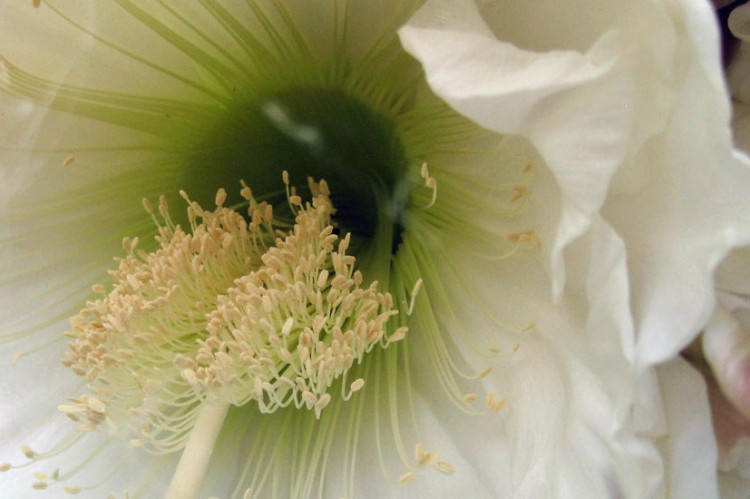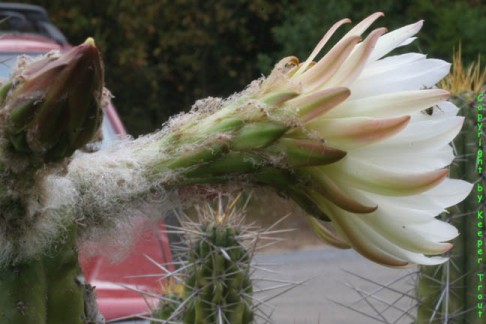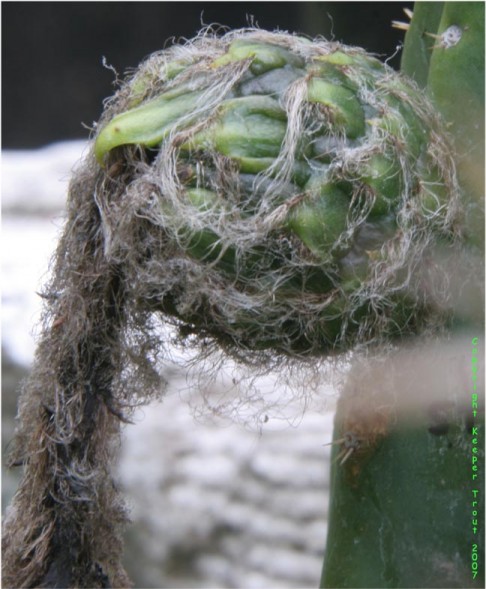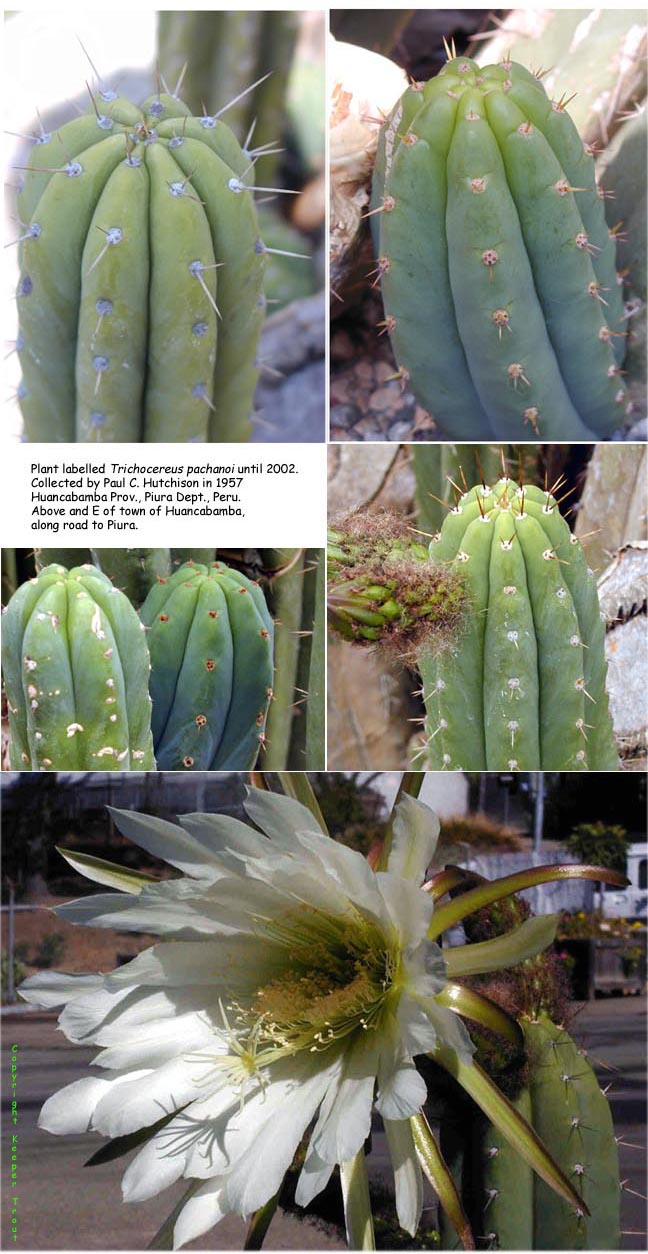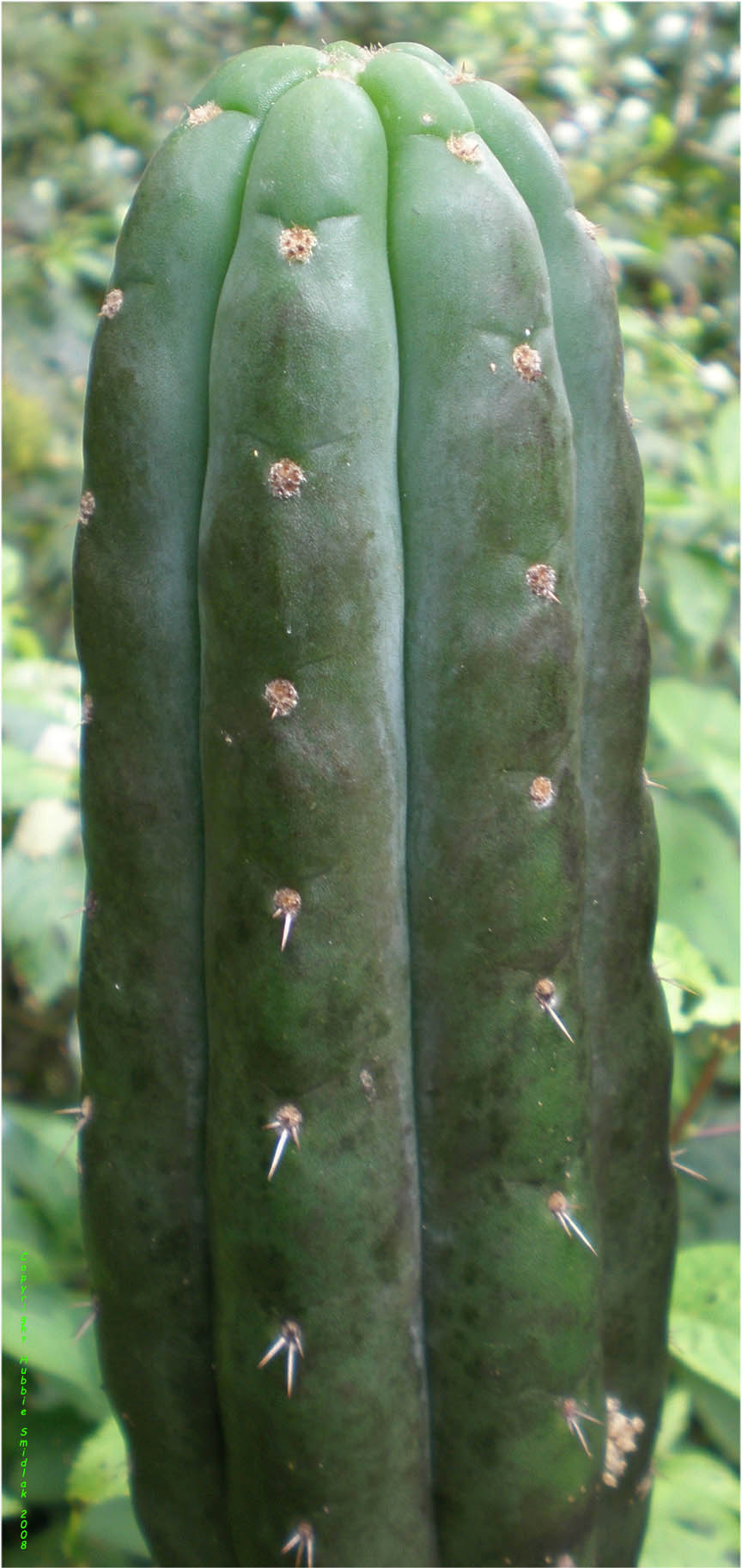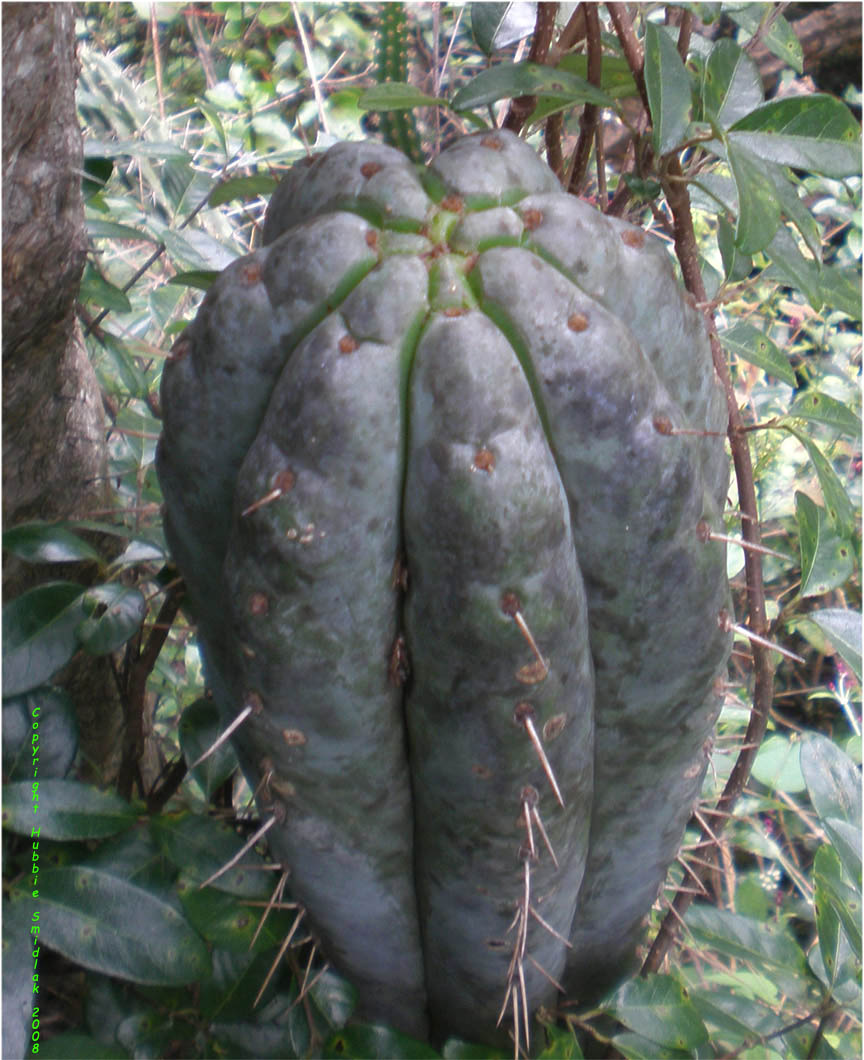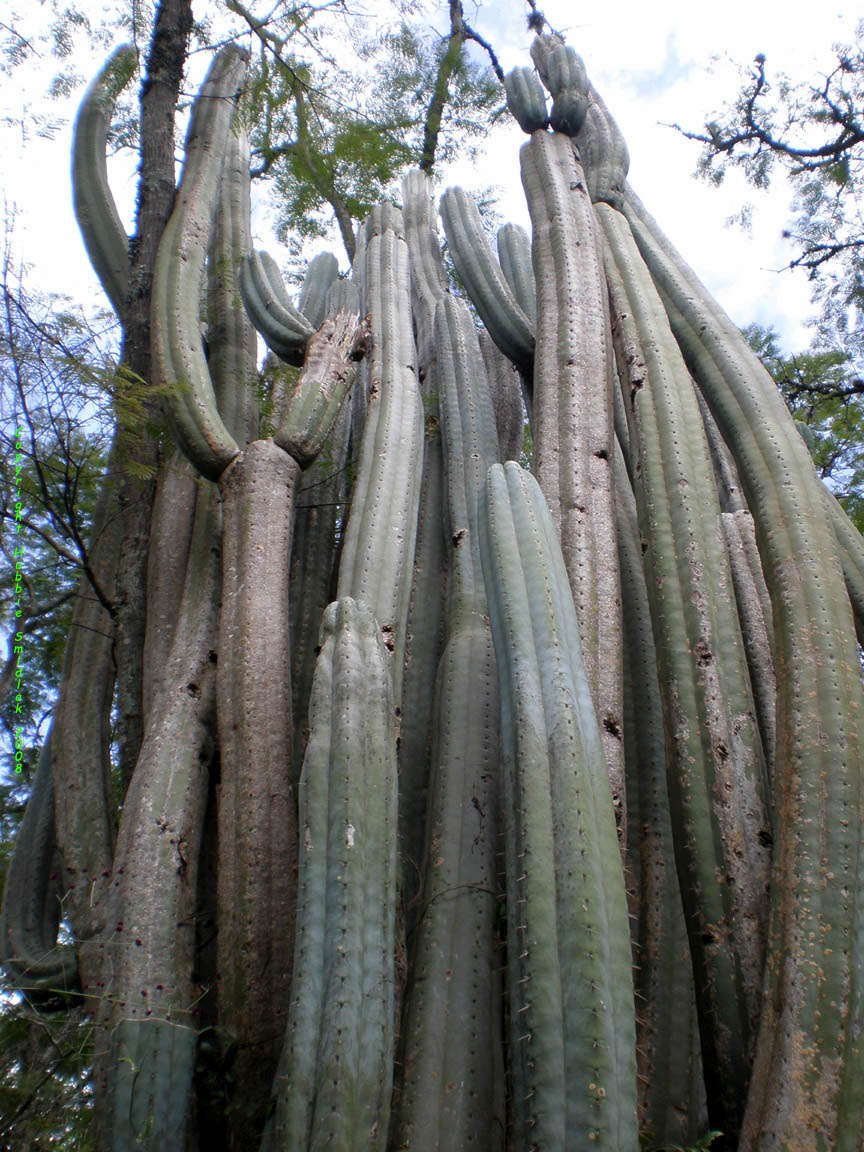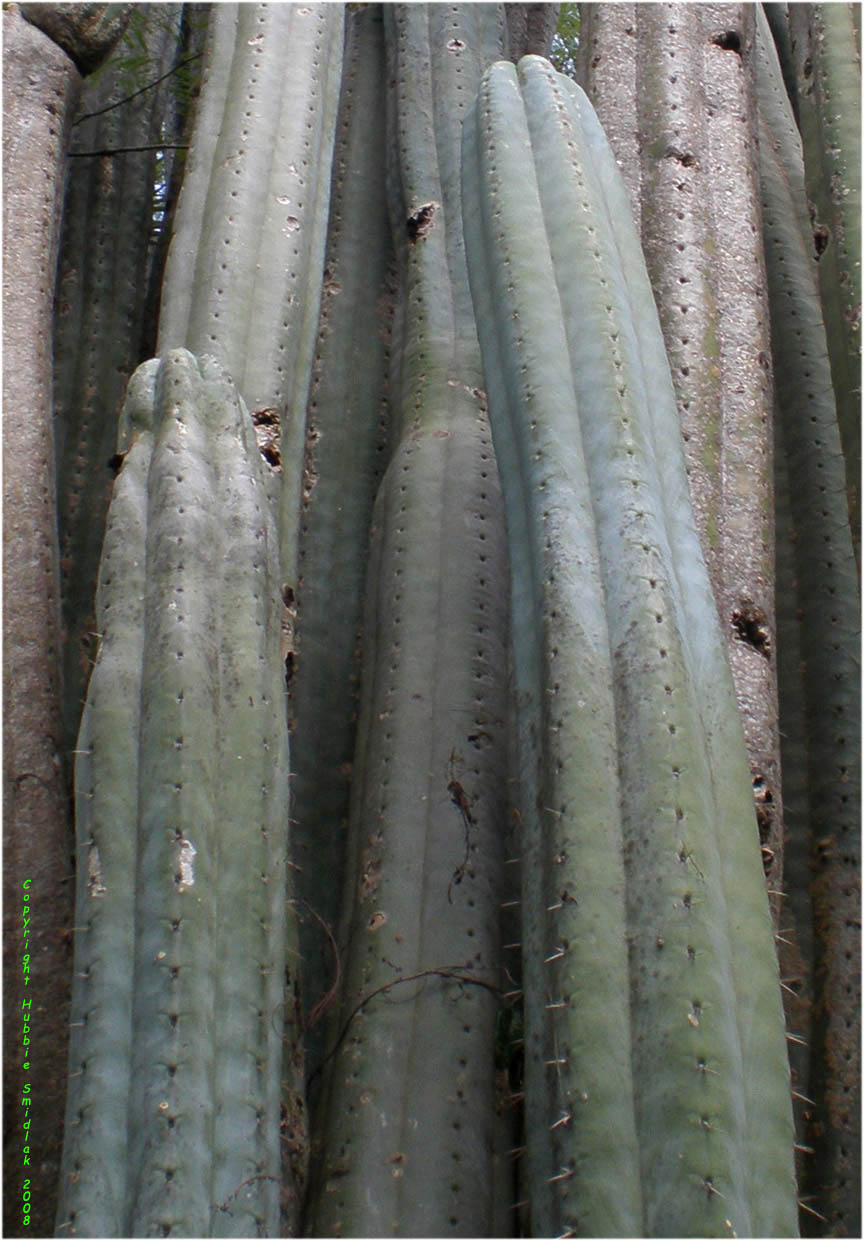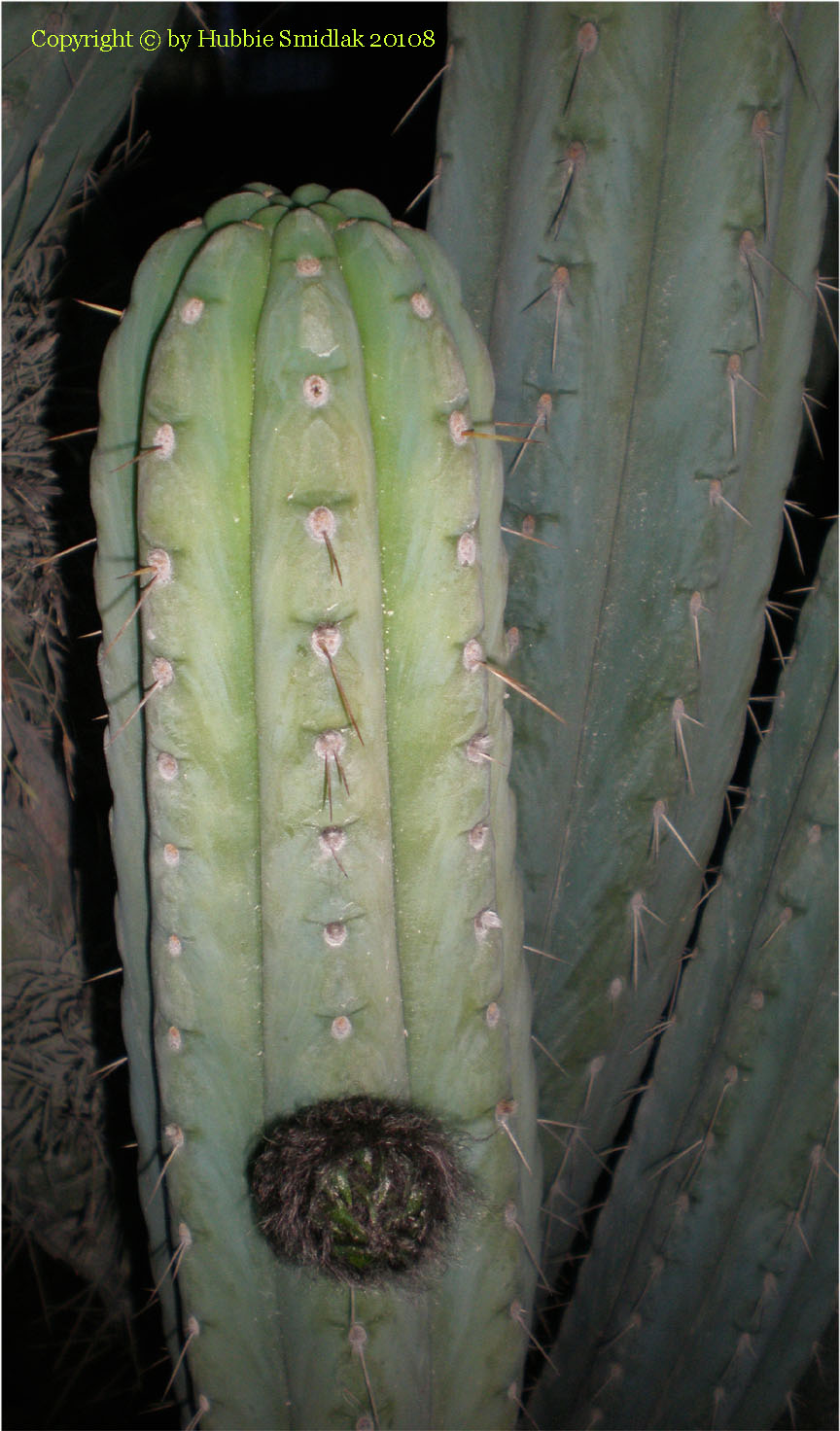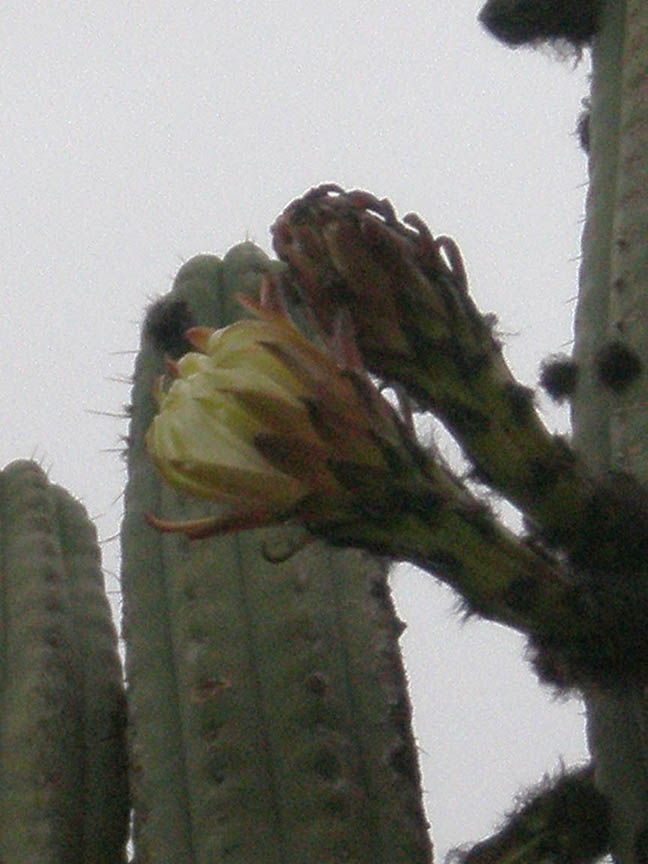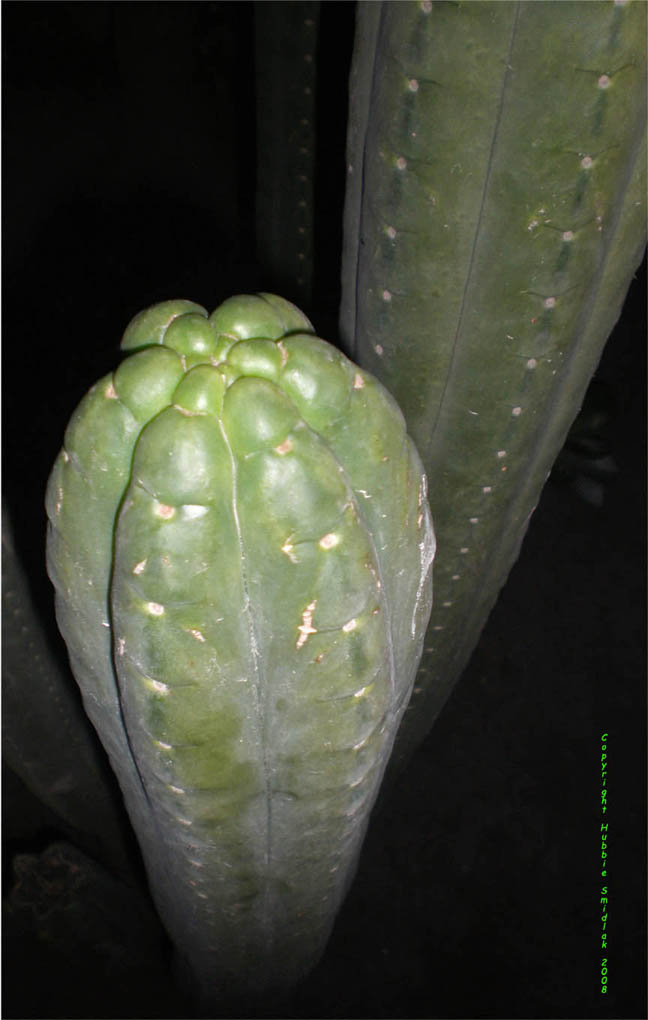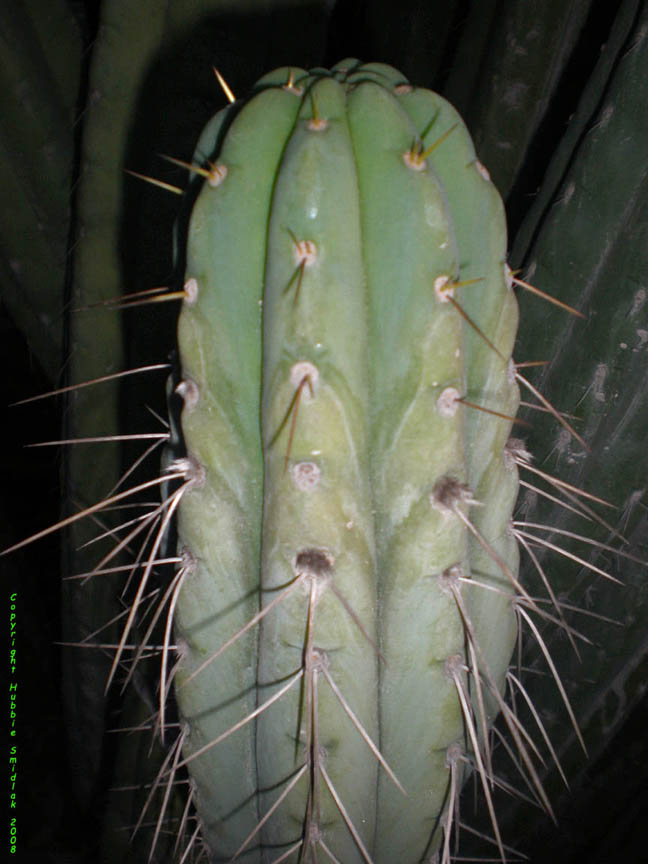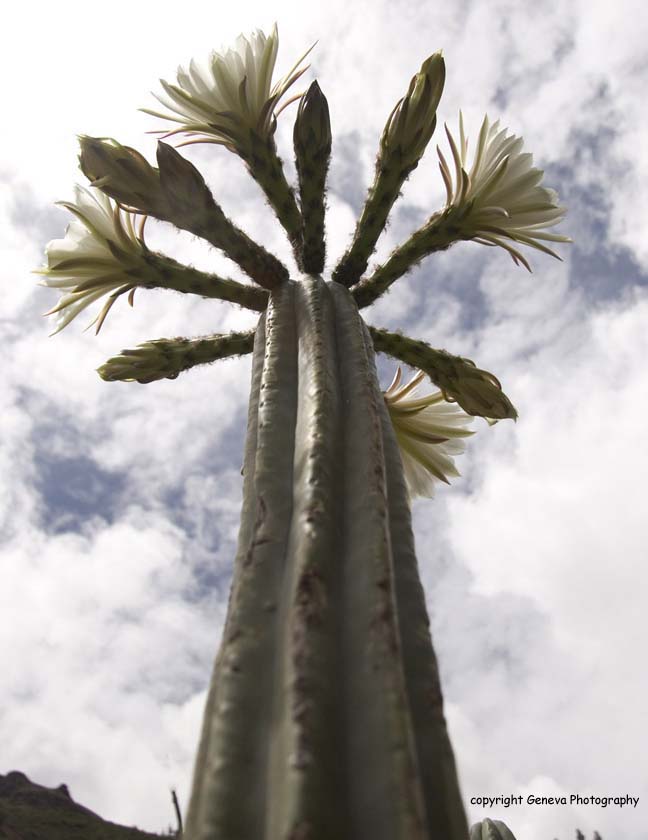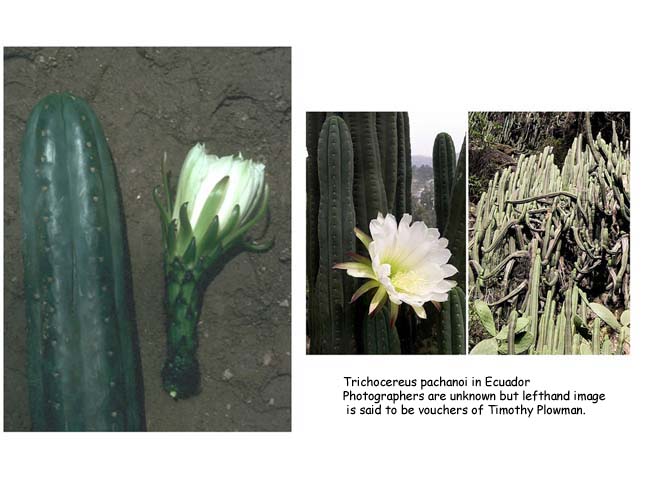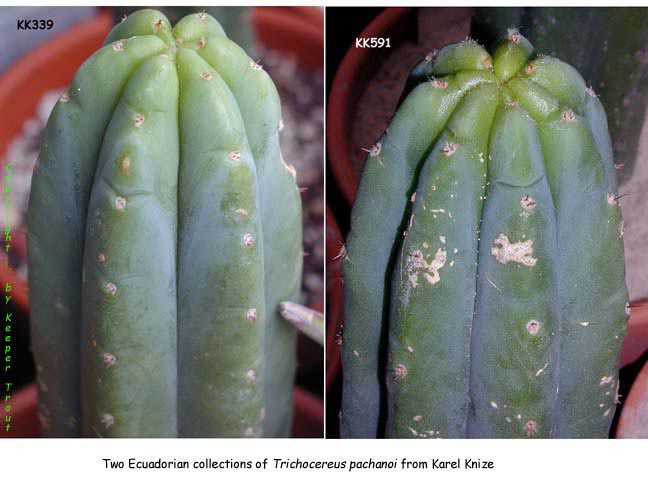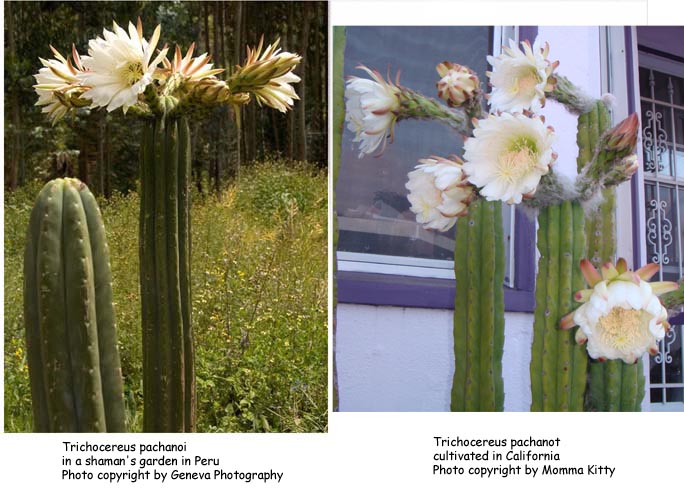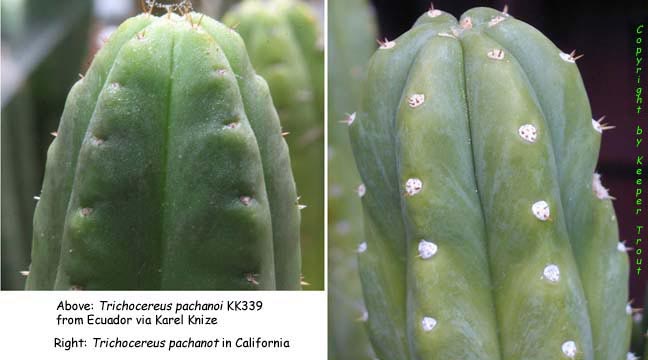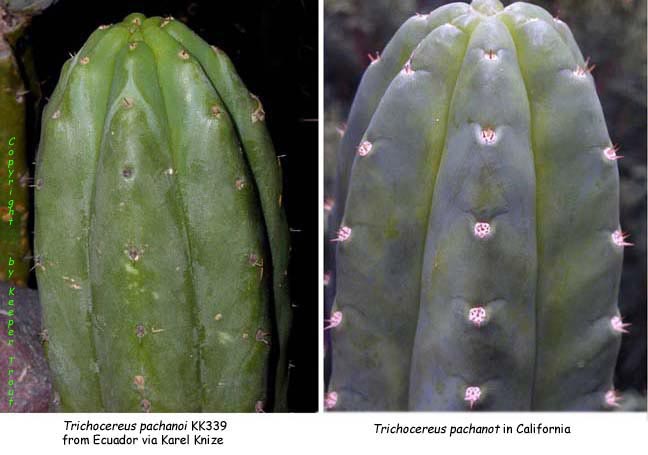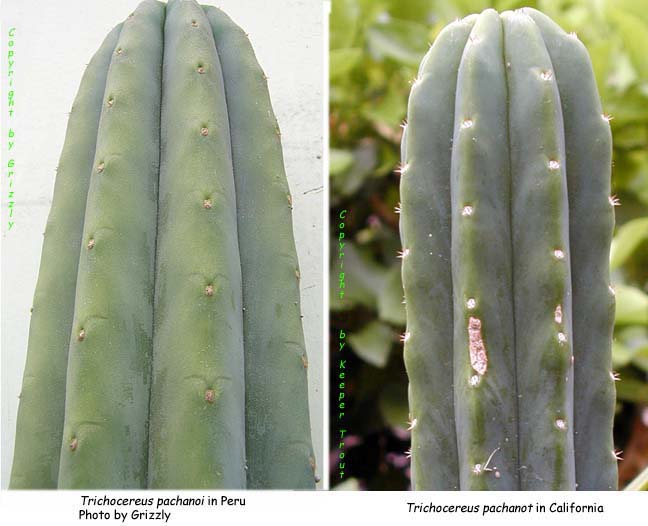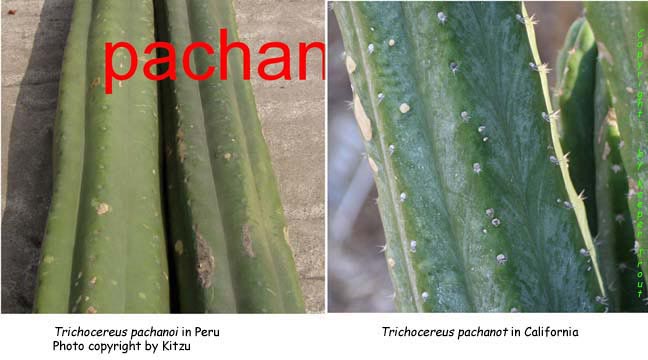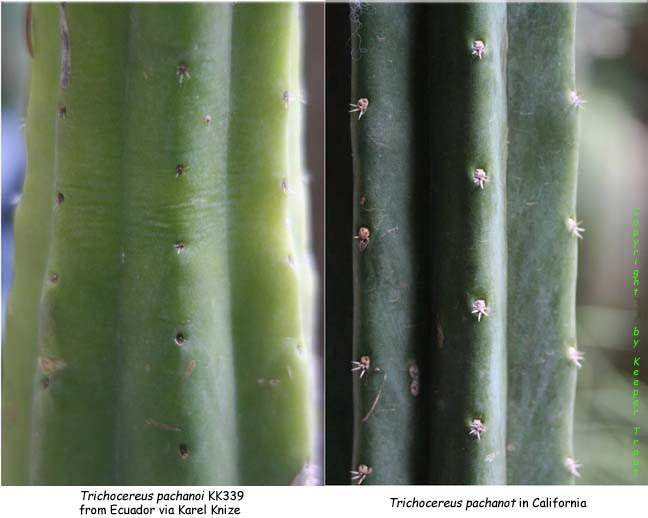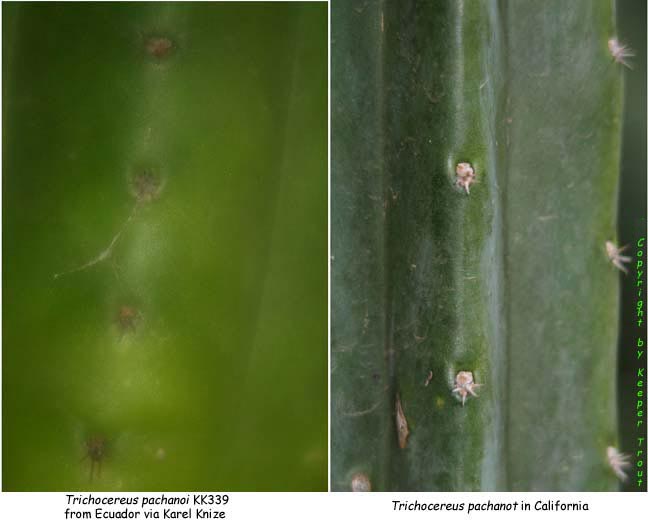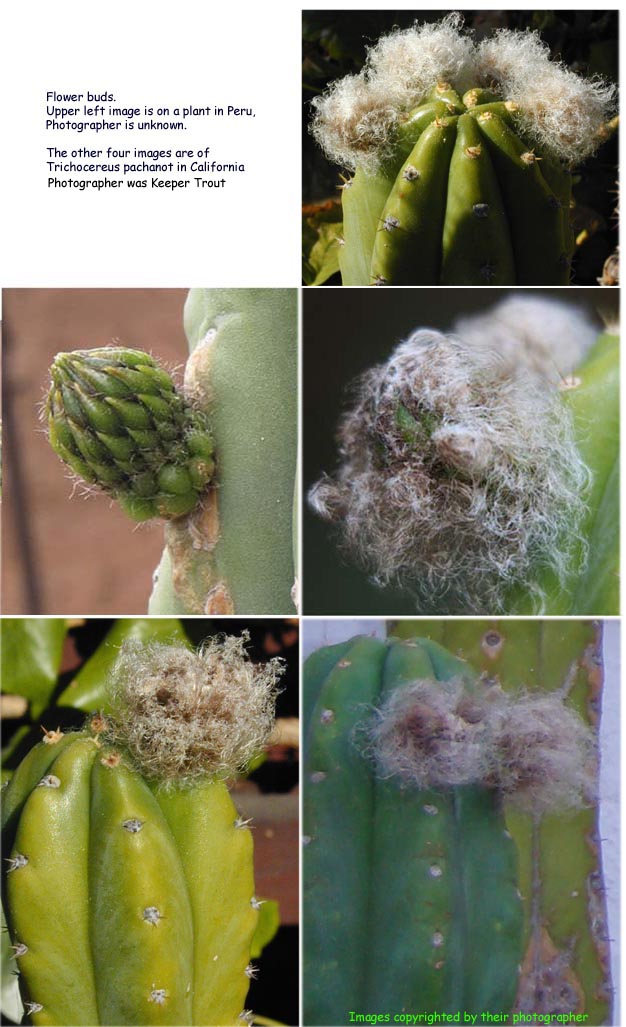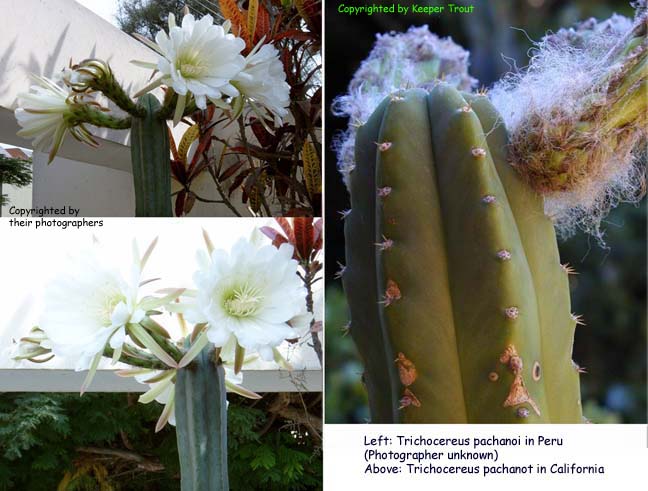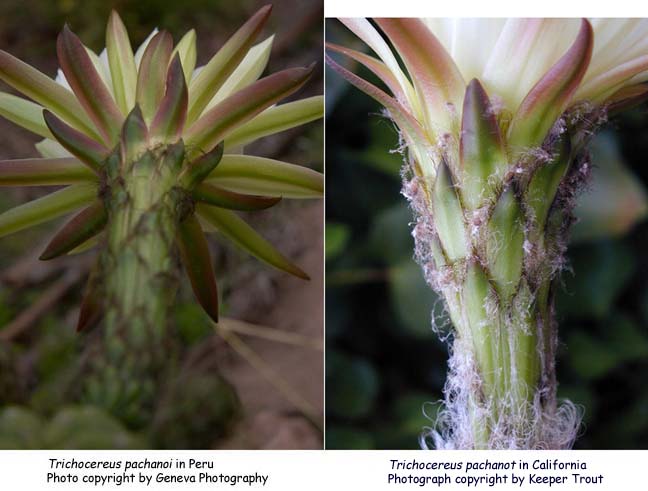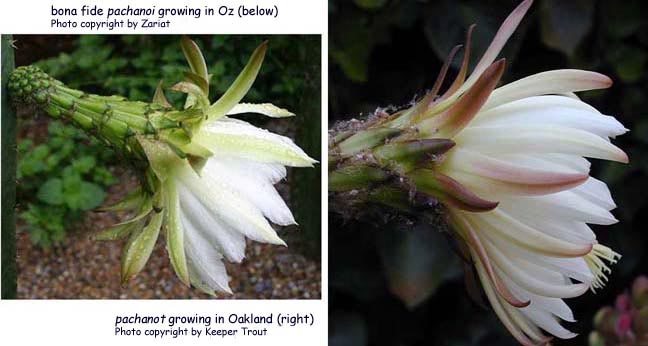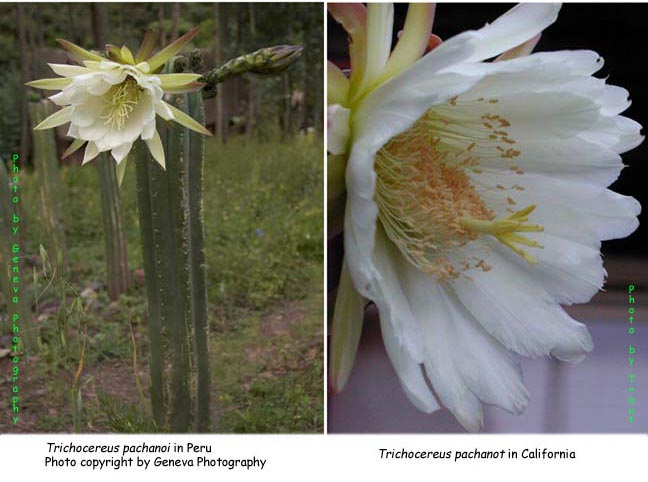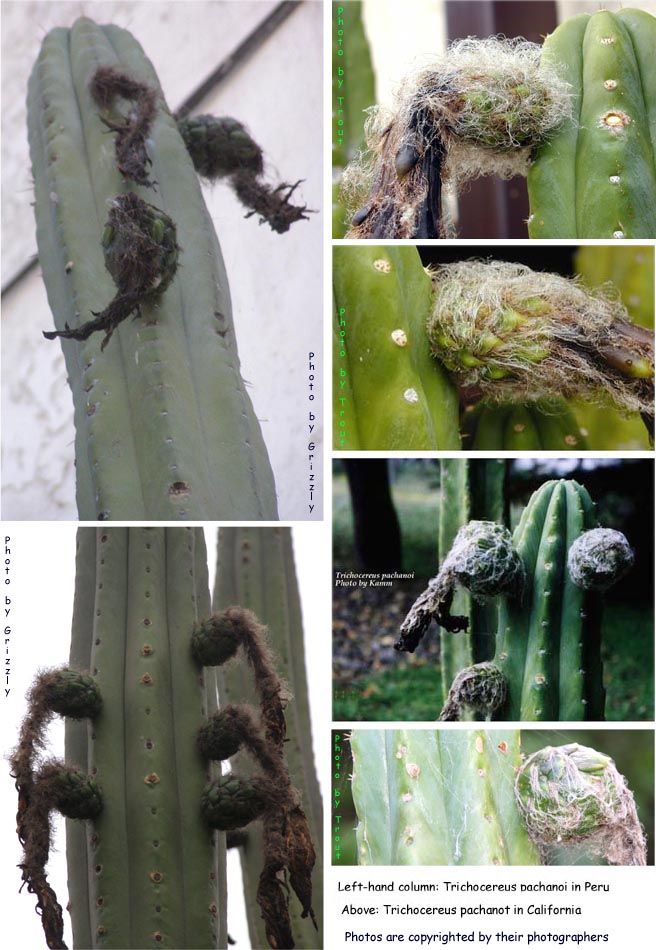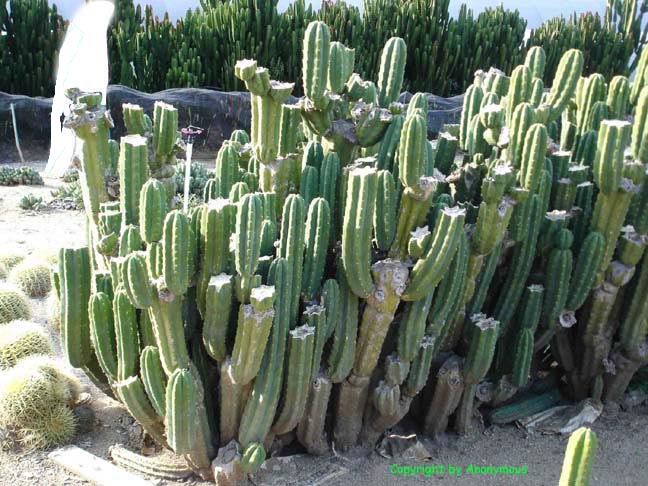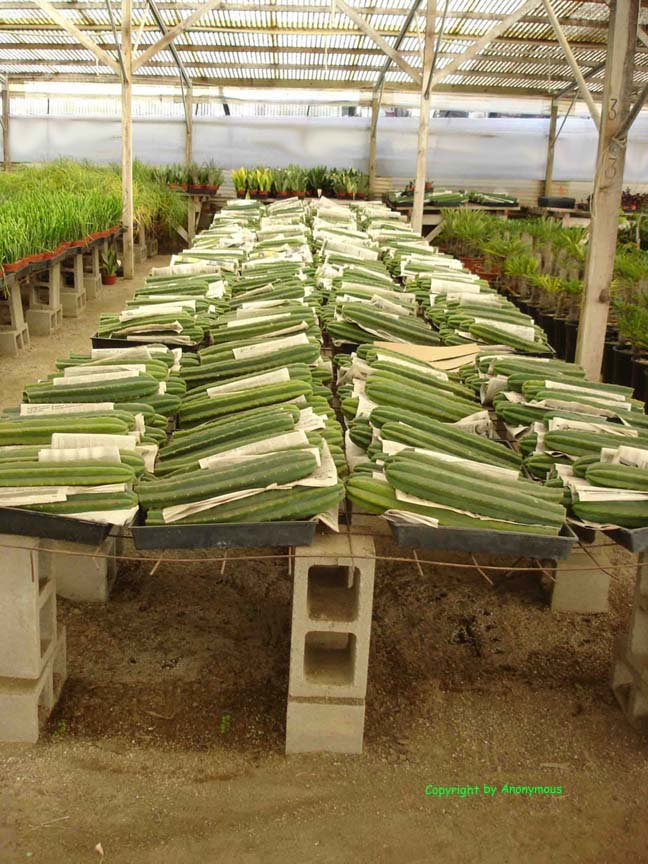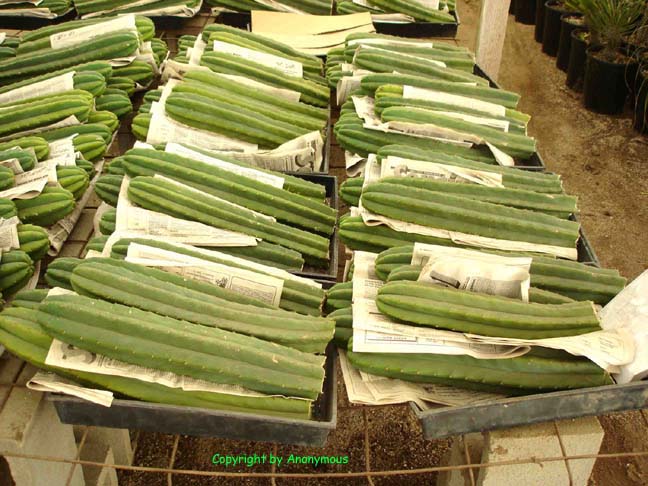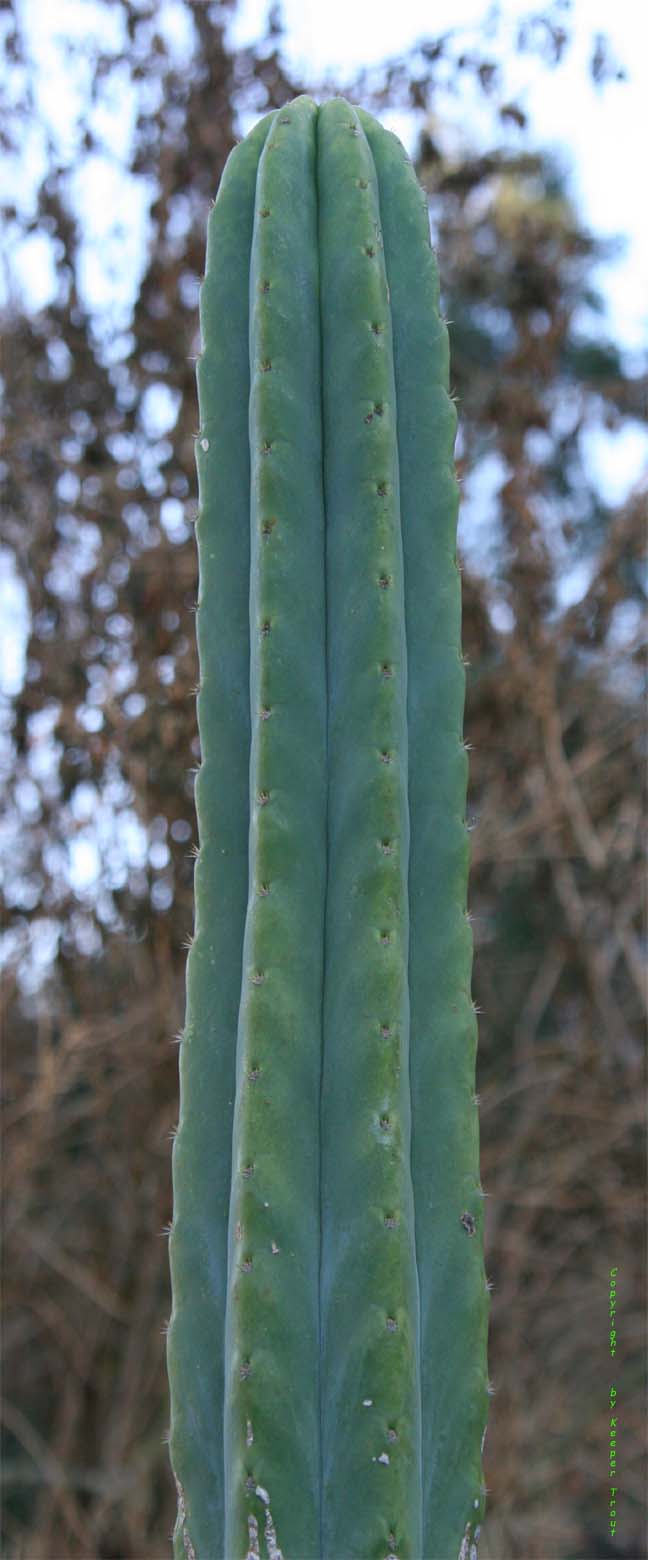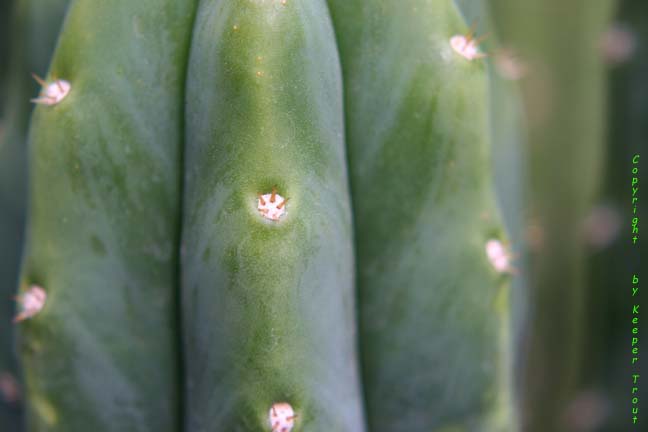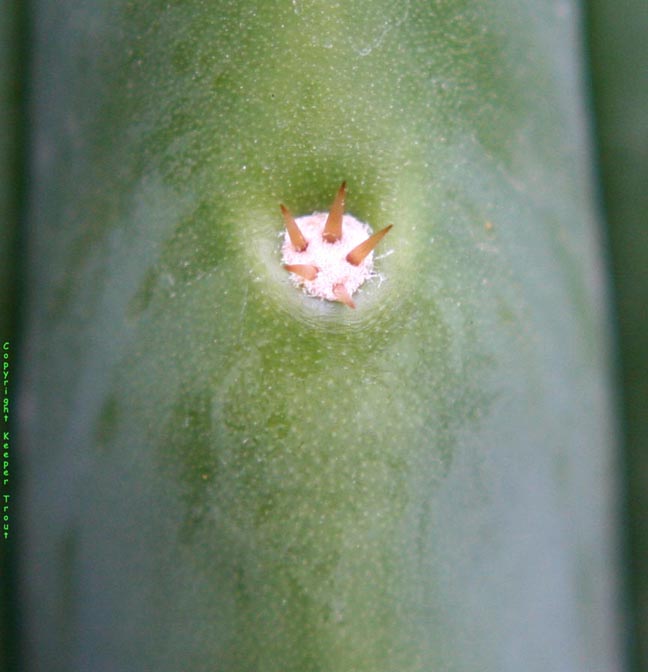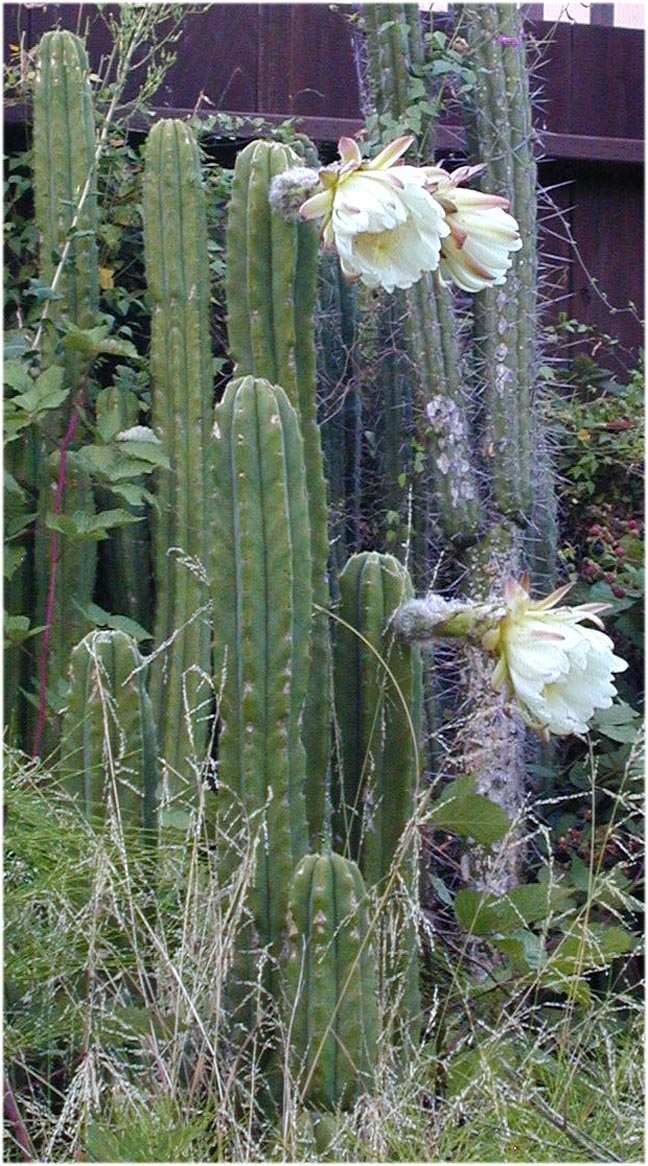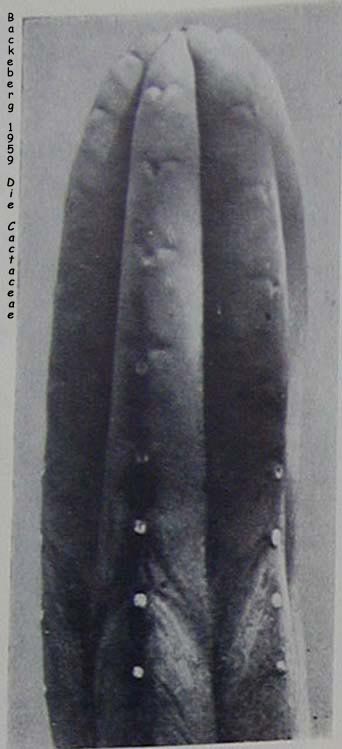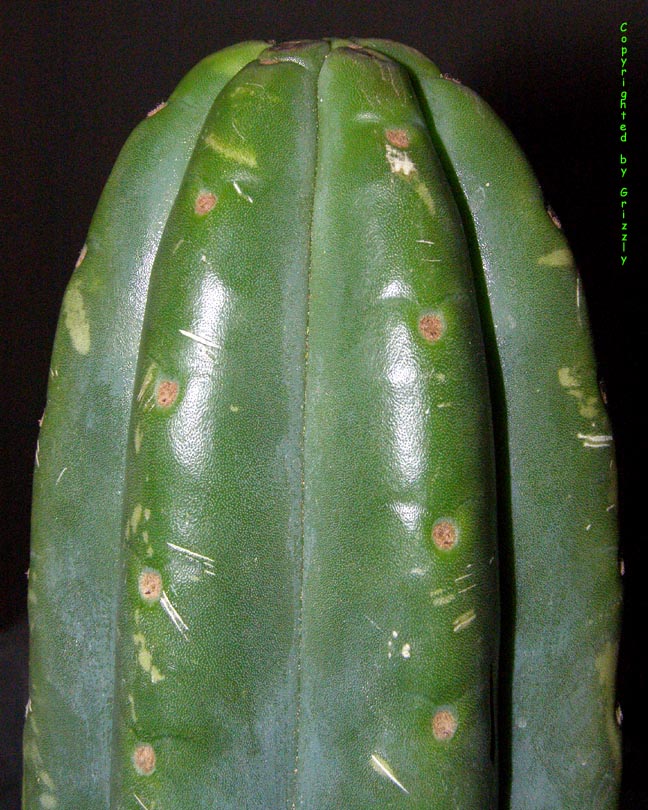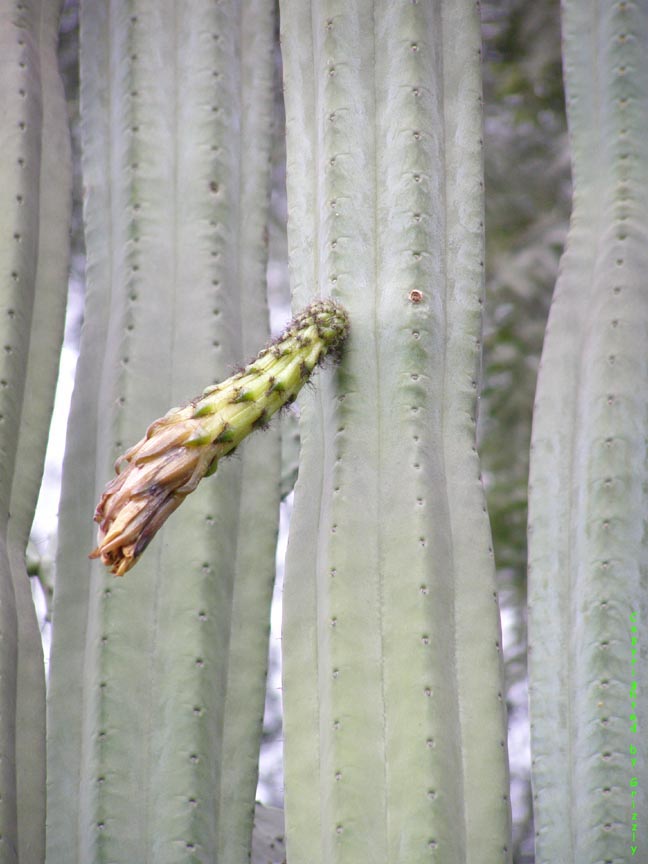Michael Smith’s observations
The topic revolves around a deceptively simple observation made by Michael S. Smith:
What is most commonly recognized as Trichocereus pachanoi in the USA differs from the published description for Trichocereus pachanoi.
His primary point of contention that concerns the pachanot is based on the following rather simple comment from Britton & Rose 1920:
“…ovary covered with black curled hairs; axils of scales on flower-tube and fruit bearing long black hairs.”
page 134 in The Cactaceae
Its good to remember that Britton & Rose had initially reported pachanoi from Ecuador and Backeberg expanded its reported range into Peru in the 1930s. Backeberg encountered it at Huancabamba being called San Pedro. Many wild collections and herbarium vouchers have been made.
To lessen some unavoidable confusion, its important to be aware that bona fide pachanoi commonly exists with long spines and with very short spines. Sometimes both can be present on a single plant. Or its spination can be somewhere in between the two extremes.
The crazy range of variability for pachanoi itself makes it tempting to dismiss Smith’s questions offhand without taking time for a close look.
Just for fun, let’s take that closer look.
The reason that comment of Britton & Rose provoked some conflict with observation of the pachanot is the latter deviates by typically showing white, light brown or grey woolly hair on its ovary, tube and fruit.
Hair color seems like a really trivial feature to make very much of anything out of, especially considering how most of the other features on these cacti can be so extremely variable. This is yet another reason that it’s easy to dismiss this subject without giving it much thought.
If, however, it had just been Britton & Rose’s description it could have ended there.
Fortunately we are lucky enough to have more descriptive comments available to us (and we also have some nice views of what still exists in South America today that are available for sake of enabling a comparison).
If it was just the hair color that was different this conversation might never have begun. It was this small observation however that led into what has proven to be an unusually illuminating and thought provoking pathway of questioning.
Curt Backeberg modified his description of pachanoi hair to brown which nicely fits some of the plants still growing where he collected in Peru.
In the 1931 description that Curt Backeberg wrote for Cereus pachanoi Werdermann was the comment:
“Fruchtknoten und Röhre […] mit langen, braunen Wollhaaren.”
page 79 in Neue Kakteen
John Borg made a similar statement in 1937.
“…with ovary and tube covered with long brown hairs.”
page 183 in Cacti
However by 1959 the description coming from Backeberg’s hand had grown more towards Britton & Rose’s black:
“Ov. und Röhre mit schwärzlichen Haaren besetz.”
page 1118 in Die Cactaceae
Friedrich Ritter similarly referred to blackish-brown and black in his description of pachanoi in 1981:
“Fruchtknoten […] mit reichlichen schwarzbraunen Wollhaaren”
&
“Blütenröhre […] langen graugrünen Schuppen und schwarzen, 15–25 mm langen Wollbüscheln”
page 1324 in Kakteen in Südamerika
In 1984, Carlos Ostolaza wrote another description of pachanoi with detailed floristic comments:
“Pericarpel […] is covered with scales with brownish hairs 15 mm (.6″) long on the axils [….] floral tube […] has fewer scales […] with more hair on axils.”
&
“The fruit […] covered with scales and black hairs.”
page 102 in the Cactus & Succulent Journal (US) 56.
Another description came from Jens Madsen in 1981:
“[areoles of the floral bracts]…bearing clusters of brownish black, 1-22 mm long, curled and twisted hairs.”
page 28 in Flora of Ecuador.
Edward Anderson’s 2001 The Cactus Family:
“pericarpels and floral tubes with black hairs”
page 276.
The 2006 New Cactus Lexicon of David Hunt:
“pc [pericarpel] and hyp [hypanthium] with black hairs”
page 98.
Hmmm.
There seems to be something amiss with our ‘San Pedro’.
While I may be accused of splitting hairs, these photos should raise some questions:
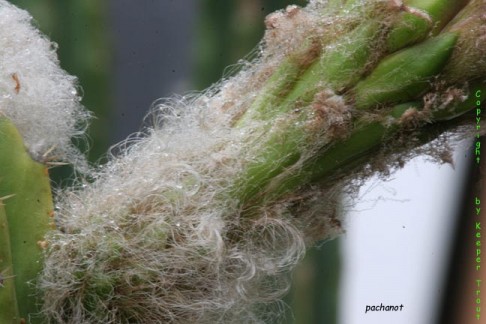
The fruit in the lower photograph above
has seen its surface features fortuitously exposed by rain.
This example is the “blackest” hair I have
thusfar encountered on a pachanot fruit.
Several questions spring to mind but I have no real answer for any of them.
As a first set:
What happened here?
&
How, where & when did this come to be the predominate pachanoi in US horticulture?
No matter what the answers turn out to be, there are two separate topics that exist as a result of this observation:
Topic 1)
‘Backeberg’s clone’ is a misnomer – as the pachanot could not have come from Backeberg.
compared to what *Backeberg actually knew as pachanoi*.
Topic 2)
The pachanot and pachanoi may look rather similar but they have predictable differences if their flowers and/or fruit can be examined.
Trichocereus pachanoi
to the “pachanot“
Take a look at a real pachanoi growing in Ecuador today.
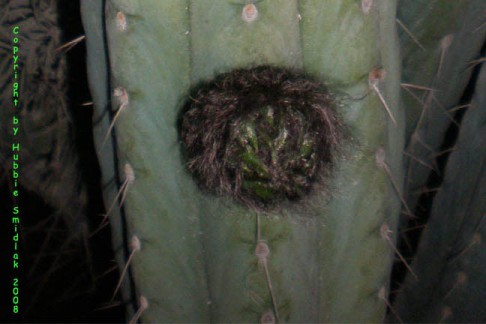
pachanot compared to bridgesii
Photos are by Keeper Trout except where indicated otherwise.
Please contact us or them to obtain reuse permission.

